The Battle of Midway, fought from June 3 — 7, 1942, seventy-seven years ago this week, was a major American victory in the Pacific theater in World War II. Only six months after Japan’s attack on Pearl Harbor, Midway was a turning point in the naval war in the Pacific. Key to the victory was the American breaking of the Japanese naval code. Thanks to the code breakers, what had been intended to be another Japanese surprise attack became a well-laid trap by the US Navy. Here is a 15-minute tactical overview of the battle. Well worth watching.
 I am aware of only one man who was praised by both Eisenhower and Hitler. A repost on the 75th anniversary of D-Day.
I am aware of only one man who was praised by both Eisenhower and Hitler. A repost on the 75th anniversary of D-Day.
General Dwight David Eisenhower said that “Andrew Higgins … is the man who won the war for us. … If Higgins had not designed and built those LCVPs, we never could have landed over an open beach. The whole strategy of the war would have been different.”
Adolph Hitler referred to Andrew Higgins as the “new Noah,” though his admiration was more begrudging. On the 75th anniversary of the Normandy landings, better known as D-Day, it seems worthwhile to remember Andrew Higgins and the amazing Higgins boat.
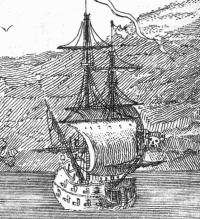
Queen Anne’s Revenge
Edward Teach, better known as the pirate Blackbeard, terrorized the Caribbean and the North American East Coast in the early 18th century. Now a documentary filmmaker is claiming that the State of North Carolina is engaging in modern-day digital piracy. On Monday, the US Supreme Court agreed to hear the case brought by filmmaker, Frederick Allen, against state officials in North Carolina who he accuses of unlawfully pirating his footage of the wrecked pirate ship, the Queen Anne’s Revenge, which went down in 1718.
As reported by the LA Times: The case began with the discovery of the wreckage of Blackbeard’s flagship, which sank in November 1718 and was found by a private research group in 1996.
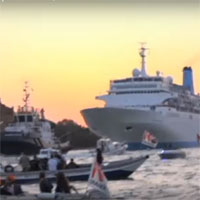 The crash of the MSC Opera into the dock and a river tour boat while docking on the Giudecca Canal on Sunday in Venice Italy, has prompted new calls for limits or an outright ban of large cruise ships in Venice. After the crash, Venice’s mayor Luigi Brugnaro said, “Once again it is shown that big ships cannot cross the Giudecca Canal.”
The crash of the MSC Opera into the dock and a river tour boat while docking on the Giudecca Canal on Sunday in Venice Italy, has prompted new calls for limits or an outright ban of large cruise ships in Venice. After the crash, Venice’s mayor Luigi Brugnaro said, “Once again it is shown that big ships cannot cross the Giudecca Canal.”
“It worries me because it’s something that could’ve happened so many other times, and could happen again today, ” said Jane Da Mosto, an environmental scientist who heads We Are Here Venice, which wants to ban cruise ships.
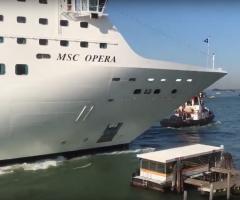 At about 8:30 AM on Sunday, the cruise ship MSC Opera lost control while docking on the Giudecca Canal in Venice Italy, slamming into the dock and hitting a tour boat. Five people were reported to be injured, but none seriously. The ship was accompanied by two tugs which were unable to control the 65,591 GT ship. MSC Opera was built in 2004 and has a capacity of around 2,150 passengers and 728 crew.
At about 8:30 AM on Sunday, the cruise ship MSC Opera lost control while docking on the Giudecca Canal in Venice Italy, slamming into the dock and hitting a tour boat. Five people were reported to be injured, but none seriously. The ship was accompanied by two tugs which were unable to control the 65,591 GT ship. MSC Opera was built in 2004 and has a capacity of around 2,150 passengers and 728 crew.
“The MSC ship had an engine failure, which was immediately reported by the captain,” Davide Calderan, head of a tugboat company involved in accompanying the ship into its berth, told Italian media. “The engine was blocked, but with its thrust on, because the speed was increasing,” he said.
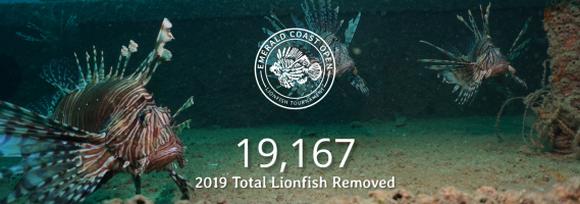 For several years, we have followed the attempts to control, if not eradicate, the invasive lionfish from the waters around Florida and the Caribbean. Recently, divers participating in Destin, Florida’s Emerald Coast Open, which is described as the “world’s largest lionfish tournament,” removed 19,167 of the invasive predators.
For several years, we have followed the attempts to control, if not eradicate, the invasive lionfish from the waters around Florida and the Caribbean. Recently, divers participating in Destin, Florida’s Emerald Coast Open, which is described as the “world’s largest lionfish tournament,” removed 19,167 of the invasive predators.
Sometime in the 1990s, two different species of lionfish made it into the waters of the Atlantic off Florida. Native to the Indo-Pacific, the venomous, predatory fish spread rapidly, decimating local reef fish in the Atlantic, the Gulf of Mexico, and the Caribbean. Lacking local predators to stop its spreading, the lionfish have been described as “one of the most aggressively invasive species on the planet.”
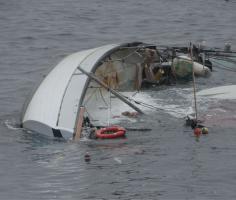 Coast Guard crews rescued a man and woman from a capsized sailboat in rough seas about 65 miles east of Atlantic City, NJ, late Wednesday night. Heidi Snyder and Peter Bailey, who have been sailing around the world for two years, were traveling from South Carolina to New York City when a microburst capsized their 55-foot wooden-hull sailboat, Bertie.
Coast Guard crews rescued a man and woman from a capsized sailboat in rough seas about 65 miles east of Atlantic City, NJ, late Wednesday night. Heidi Snyder and Peter Bailey, who have been sailing around the world for two years, were traveling from South Carolina to New York City when a microburst capsized their 55-foot wooden-hull sailboat, Bertie.
Beyond the range of VHS radio, the couple activated their EPIRB (Emergency Position Indicating Radio Beacon) which allowed the Coast Guard to locate them clinging to the capsized hull.
 Sadly, the sinking of overloaded ferry boats in the developing world is not new news. It happens with a great enough frequency that it is easy to overlook. Which may be why these tragedies are worth noting. Last weekend, an overcrowded boat sank on Lake Mai-Ndombe in the Democratic Republic of Congo. The majority of those on board were teachers going to collect their salaries, a local mayor told the BBC.
Sadly, the sinking of overloaded ferry boats in the developing world is not new news. It happens with a great enough frequency that it is easy to overlook. Which may be why these tragedies are worth noting. Last weekend, an overcrowded boat sank on Lake Mai-Ndombe in the Democratic Republic of Congo. The majority of those on board were teachers going to collect their salaries, a local mayor told the BBC.
According to the provincial governor, Antoine Masamba, the boat had been carrying some 400 passengers, of whom 45 were confirmed dead and 200 were still unaccounted for. The vessel was not meant to carry more than 80 people. Its official manifest indicates that it had about 130 passengers.
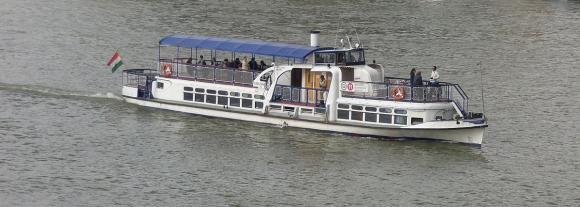
Mermaid on the Danube
A Viking River Cruises ship, the Viking Sigyn, collided with a tourist sightseeing boat in the Danube River named Mermaid off Budapest on Wednesday night. Of the 33 Korean tourists and two Hungarian crew aboard the sightseeing boat, seven have been rescued, seven have been confirmed dead and 21 are still missing.
The BBC reports that CCTV footage showed the boat that sank – Hableany, or Mermaid – being hit from behind by a larger tour boat – Viking Sigyn – near the Margit (Margaret) Bridge in central Budapest after 21:00 local time (19:00 GMT).
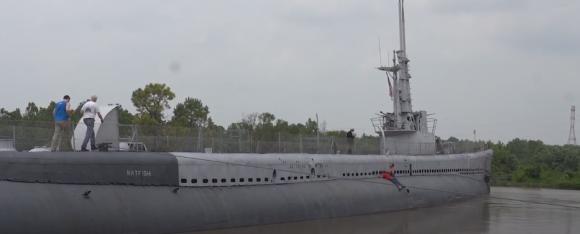 USS Batfish is a Balao-class submarine, known primarily for the remarkable feat of sinking three Imperial Japanese Navy submarines in a 76-hour period, in February 1945. Since 1973, USS Batfish has served as an unlikely museum ship hauled up on shire at the Muskogee War Memorial Park in Muskogee, OK, near the confluence of the Arkansas River, Grand River, and Verdigris Rivers. Now with the rivers at historic flood levels, the World War II era submarine is afloat on the flood water, as volunteers scramble to keep the old sub from sinking or being overwhelmed by the swirling torrents. Continue reading
USS Batfish is a Balao-class submarine, known primarily for the remarkable feat of sinking three Imperial Japanese Navy submarines in a 76-hour period, in February 1945. Since 1973, USS Batfish has served as an unlikely museum ship hauled up on shire at the Muskogee War Memorial Park in Muskogee, OK, near the confluence of the Arkansas River, Grand River, and Verdigris Rivers. Now with the rivers at historic flood levels, the World War II era submarine is afloat on the flood water, as volunteers scramble to keep the old sub from sinking or being overwhelmed by the swirling torrents. Continue reading
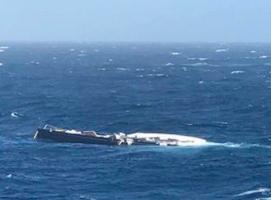 How is our week going so far? Probably better than Pier Luigi Loro Piana and also no doubt better than the captain of the general cargo ship Brattingsborg. The ship was carrying the 130′ (39.9 meter) yacht, My Song, owned by Mr. Loro Piana, from the Caribbean to the Mediterranean. The yacht was bound ultimately for Porto Cervo, in northern Sardinia, where it was supposed to take part in the upcoming Loro Piana Superyacht Regatta. Sadly, the mega-yacht never made it. The Brattingsborg was struck by a storm near the Gulf of Lion. Sometime late Saturday or early Sunday, the yacht My Song was lost over the side.
How is our week going so far? Probably better than Pier Luigi Loro Piana and also no doubt better than the captain of the general cargo ship Brattingsborg. The ship was carrying the 130′ (39.9 meter) yacht, My Song, owned by Mr. Loro Piana, from the Caribbean to the Mediterranean. The yacht was bound ultimately for Porto Cervo, in northern Sardinia, where it was supposed to take part in the upcoming Loro Piana Superyacht Regatta. Sadly, the mega-yacht never made it. The Brattingsborg was struck by a storm near the Gulf of Lion. Sometime late Saturday or early Sunday, the yacht My Song was lost over the side.
 For several years, we have followed the efforts to save the USS Texas, the last surviving dreadnought, as well as the only battleship in existence today that fought in both World War I and World War II. Since 1948, the ship has been a museum docked at the San Jacinto Battleground Historic Site in La Porte, TX. In recent decades, the old ship, owned by the State of Texas, has been in a losing battle against time and rust. Texas taxpayers currently spend about $2 million a year to keep it from sinking with small fixes and steadily running pumps.
For several years, we have followed the efforts to save the USS Texas, the last surviving dreadnought, as well as the only battleship in existence today that fought in both World War I and World War II. Since 1948, the ship has been a museum docked at the San Jacinto Battleground Historic Site in La Porte, TX. In recent decades, the old ship, owned by the State of Texas, has been in a losing battle against time and rust. Texas taxpayers currently spend about $2 million a year to keep it from sinking with small fixes and steadily running pumps.
A bill recently passed the Texas Senate 31-0 to provide $35 million to repair and restore the historic battleship. There has been disagreement in the Texas House on some of the terms of the bill, that states, after the ship is repaired out of state, they would “bring it back to a prominent place in the state for future generations to enjoy and preserving its status as a museum and giving it the respect it deserves for this last standing ship of its kind.”
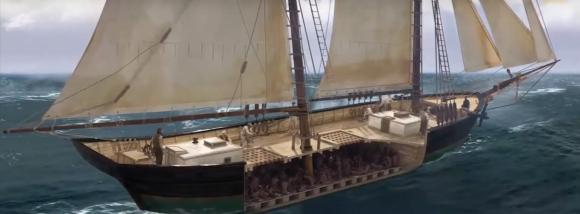 In January 2018, the news broke that a journalist believed that he had found the burned wreckage of the schooner Clotilda, the last vessel to carry Africans into bondage in the United States. By March, however, further research and excavation determined that the wreck was, in fact, not that of the infamous slave ship. Nevertheless, the near-discovery triggered renewed interest in finding the wreck.
In January 2018, the news broke that a journalist believed that he had found the burned wreckage of the schooner Clotilda, the last vessel to carry Africans into bondage in the United States. By March, however, further research and excavation determined that the wreck was, in fact, not that of the infamous slave ship. Nevertheless, the near-discovery triggered renewed interest in finding the wreck.
Last week, the National Geographic Society reported that the Clotilda has been found, discovered by archaeology firm company Search Inc, which was called in to help by the Alabama Historical Commission to investigate a likely wreck off Twelve Mile Island in the Mobile River delta. The dimensions and construction of the wreck matched those of the Clotilda, as did building materials, the commission said.
Here is a wonderful short video of the stepping of the mast of the tall ship Providence in Wiscasset, Maine. The 110′ 12-gun sloop-of-war is a replica of the first warship in the Continental Navy, originally chartered by the Rhode Island General Assembly as Katy in 1775. The modern replica is nearing the completion of an extensive restoration and will be sailing this summer to a new home in Alexandria, VA.
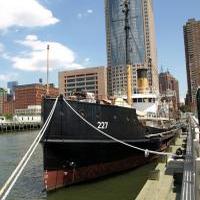 If you are near New York City over the Memorial Day Weekend, be sure to stop by the Hudson River Park’s Pier 25 to help celebrate the 86th birthday of the USCG lighthouse/buoy tender Lilac. The historic cutter will be opening for the summer season on Saturday, May 25 and Sunday, May 26 from 2:00 until 6:00 PM. Birthday cake will be served to all visitors.
If you are near New York City over the Memorial Day Weekend, be sure to stop by the Hudson River Park’s Pier 25 to help celebrate the 86th birthday of the USCG lighthouse/buoy tender Lilac. The historic cutter will be opening for the summer season on Saturday, May 25 and Sunday, May 26 from 2:00 until 6:00 PM. Birthday cake will be served to all visitors.
Lilac will also be staying open late for a special reception Sunday evening. The reception will celebrate the start of the season, the cutter’s birthday and the opening of a new exhibition of photos by Jean Miele. (Read more below.) The reception is also a celebration of our country’s Sea Services during Fleet Week New York.
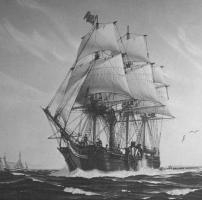 In 1933, the US Congress created National Maritime Day to recognize the maritime industry in the United States. The date chosen to celebrate the new holiday was May 22, in honor of the day that the auxiliary packet ship Savannah sailed from its namesake city in 1819. The Savannah is credited as the first steamship to cross the Atlantic Ocean.
In 1933, the US Congress created National Maritime Day to recognize the maritime industry in the United States. The date chosen to celebrate the new holiday was May 22, in honor of the day that the auxiliary packet ship Savannah sailed from its namesake city in 1819. The Savannah is credited as the first steamship to cross the Atlantic Ocean.
Bragging rights notwithstanding, if one is to be honest about the history, Savannah was neither a proper steamship nor did she actually cross the Atlantic under steam. She was built as a sailing packet ship and did have a 90 HP steam engine installed which drove twin paddle wheels, but she didn’t carry enough fuel to make the passage under steam power. On the eastbound voyage across the Atlantic, the Savannah used her engine for 80 hours in a voyage of 29 days and 11 hours. On the westbound voyage, which lasted 40 days, she did not use her engines at all.
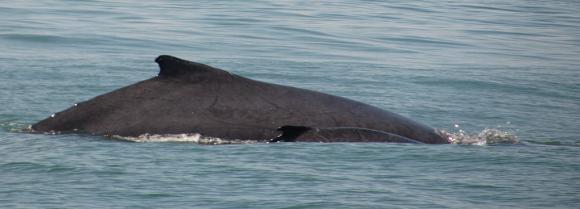 The Pacific and Atlantic coasts have seen the return of large marine creatures that have been absent for decades. On the East Coast, New York City has seen the return of humpback whales which had been missing from local waters for an entire century. The whales began their return almost a decade ago and are now a favorite of whale watching tours in the outer harbor. The humpbacks have also returned to Long Island Sound and make periodic visits to the inner harbor as well.
The Pacific and Atlantic coasts have seen the return of large marine creatures that have been absent for decades. On the East Coast, New York City has seen the return of humpback whales which had been missing from local waters for an entire century. The whales began their return almost a decade ago and are now a favorite of whale watching tours in the outer harbor. The humpbacks have also returned to Long Island Sound and make periodic visits to the inner harbor as well.
On the West Coast, off southern California, boaters have seen sharks “as big as buses.” Basking sharks, the second largest shark after the whale shark, have reappeared after an absence of three decades. No need to be concerned about going into the waters where they swim, however, the 20-26 feet long basking sharks eat only krill.

Photo: Oscar Kontovkhan
Fedor Konyukhov, a 67-year-old Russian Orthodox priest, recently arrived in the Chilean town of Puerto Williams, after rowing 11,500 kilometers from Dunedin, New Zealand to Cape Horn. He thanks Saint Nicholas the Miracle Worker for helping him survive the 154-day voyage on the Southern Ocean, one of the roughest, coldest oceans on Earth.
As reported by the South China Morning Post, Fedor Konyukhov set off from New Zealand on December 6, and arrived in Diego Ramirez Islands, Chile on May 9. At 154 days, no one has spent longer in the Southern Ocean, in any kind of boat let a lone a rowing boat. The previous record was 59 days.
 A new report by the Government Accountability Office (GAO) criticizes the Navy and the shipyard, Bath Iron Works, for serious deficiencies with the DDG 1000 Zumwalt-class destroyer program. The report found more than 320 “serious deficiencies” found upon inspection when the shipyard delivered the first-in-class USS Zumwalt’s hull, mechanical and electrical systems in May 2016. Another 246 “serious deficiencies” were found after acceptance trials in January and February 2018 for the USS Michael Monsoor, the second of three “stealth” destroyers built in Maine.
A new report by the Government Accountability Office (GAO) criticizes the Navy and the shipyard, Bath Iron Works, for serious deficiencies with the DDG 1000 Zumwalt-class destroyer program. The report found more than 320 “serious deficiencies” found upon inspection when the shipyard delivered the first-in-class USS Zumwalt’s hull, mechanical and electrical systems in May 2016. Another 246 “serious deficiencies” were found after acceptance trials in January and February 2018 for the USS Michael Monsoor, the second of three “stealth” destroyers built in Maine.
The report was critical of the Navy’s failure to complete the design and engineering of the USS Zumwalt, the first of three destroyers of the calls prior to the start of fabrication. “This approach contributed to numerous design changes after the fabrication start and significant cost increases and schedule delays,” the report notes. “Nearly ten years later, development and shipboard testing of technologies continues, each of which could lead to discovery that could disrupt the design stability the Navy currently claims.”
